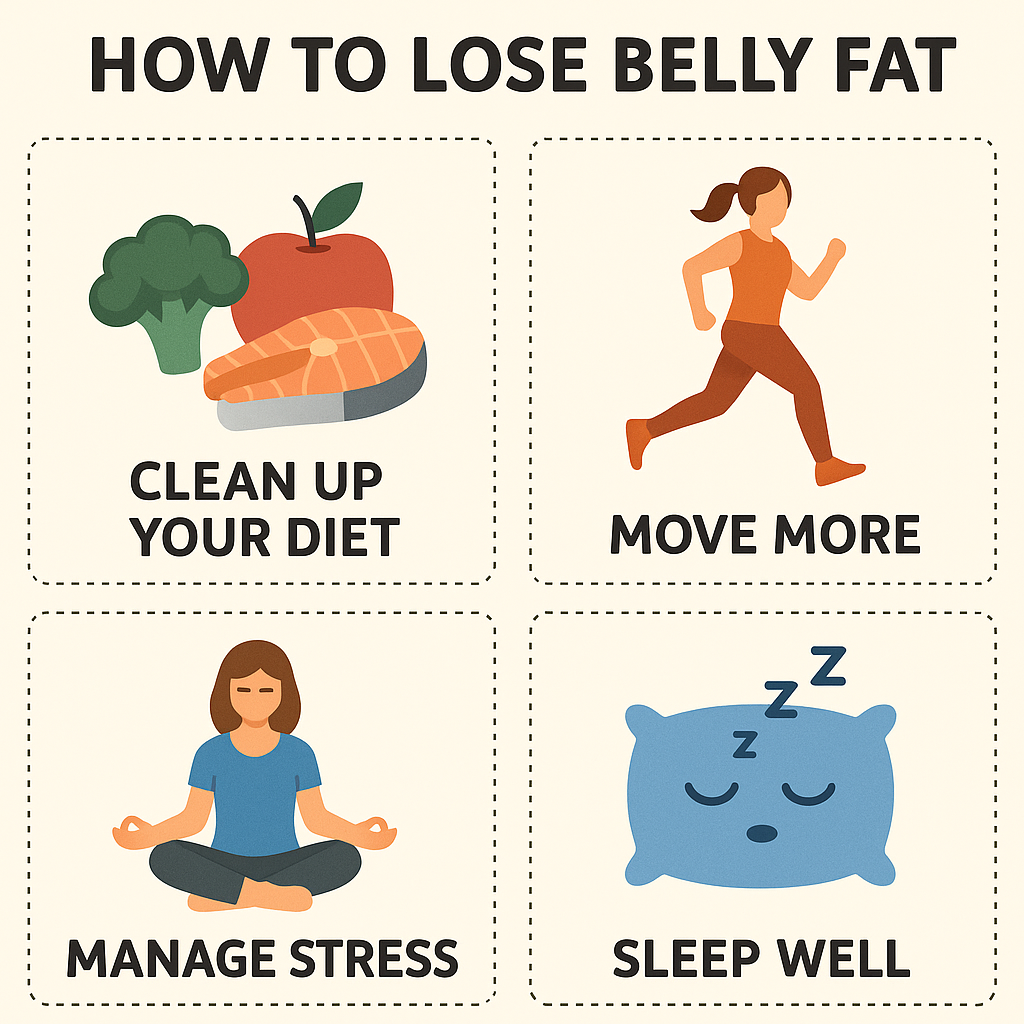How can I lose belly Fat : A Step-by-Step Guide
Losing belly fat isn’t just about fitting into your favorite jeans—it’s also about improving your overall health. Belly fat, especially visceral fat that surrounds your organs, is linked to an increased risk of heart disease, type 2 diabetes, and other health issues. If you’re serious about shedding that stubborn fat around your midsection, follow this practical, step-by-step approach. How can I Lose Belly Fat.
Step 1: Understand Belly Fat
Before diving into action, it’s important to understand what you’re dealing with. Belly fat can be divided into two types:
Subcutaneous fat: The soft layer just under the skin.
Visceral fat: The deeper fat that wraps around your organs and is more dangerous to your health.
While you can’t spot-reduce fat from one area of the body, reducing overall body fat through a combination of diet, exercise, and lifestyle changes will help slim your belly over time.
Step 2: Clean Up Your Diet
Your diet plays the biggest role in losing belly fat. Here’s how to optimize it:
Cut processed foods: Reduce intake of sugary snacks, white bread, sodas, and fast food. These contribute to weight gain and inflammation.
Eat whole foods: Focus on vegetables, fruits, whole grains, lean proteins, and healthy fats like nuts, seeds, and avocados.
Reduce sugar: High sugar intake, especially from sweetened beverages, is closely linked to increased belly fat.
Watch portions: Even healthy food can cause weight gain if eaten in excess. Use smaller plates and avoid eating while distracted.
Increase protein: Protein helps control appetite and boosts metabolism. Include eggs, chicken, tofu, lentils, or Greek yogurt in your meals.
Stay hydrated: Water helps with digestion and can reduce bloating. Aim for at least 8 glasses a day.
Step 3: Move More
Physical activity is key to burning calories and boosting metabolism.
Do cardio: Activities like walking, jogging, swimming, and cycling help burn fat. Aim for at least 150 minutes of moderate cardio per week.
Strength train: Lifting weights builds muscle, which burns more calories even at rest. Include full-body workouts 2–3 times a week.
Try HIIT: High-intensity interval training alternates short bursts of intense activity with recovery periods. It’s especially effective at targeting belly fat.
Stay active daily: Even small changes like taking the stairs or walking after meals can make a big difference.
Step 4: Manage Stress
Stress can increase cortisol, a hormone that promotes fat storage around the belly.
Practice mindfulness: Meditation, deep breathing, and yoga can reduce stress and help regulate your appetite.
Get organized: A cluttered schedule can add to stress. Prioritize tasks and take breaks when needed.
Spend time outdoors: Sunlight and fresh air improve mood and lower stress levels.
Step 5: Improve Your Sleep
Poor sleep can disrupt hormones that control hunger and fat storage.
Aim for 7–9 hours: Quality sleep helps regulate cortisol and insulin levels.
Maintain a routine: Go to bed and wake up at the same time every day, even on weekends.
Avoid screens before bed: Blue light from phones and TVs can interfere with melatonin production.
Step 6: Be Consistent and Patient
Fat loss takes time and persistence.
Track your progress: Use photos, measurements, or how your clothes fit instead of just the scale.
Set realistic goals: Aim to lose 1–2 pounds per week. Fast fixes are rarely sustainable.
Stay accountable: Join a support group, share your goals with a friend, or keep a journal.
Celebrate non-scale victories: More energy, better sleep, and improved mood are all signs you’re on the right track.
Step 7: Avoid Common Pitfalls
Don’t fall for fad diets: Extreme restrictions can lead to bingeing and yo-yo weight gain.
Beware of belly fat “miracle” products: There are no shortcuts—stick with proven lifestyle changes.
Don’t skip meals: This can slow your metabolism and increase cravings later.
Losing belly fat is a journey, not a sprint. By focusing on sustainable habits like eating clean, moving daily, managing stress, and sleeping well, you’ll not only trim your waistline but also improve your overall health. Stay consistent, trust the process, and be kind to yourself along the way.





